Short Film Critique
Quinkin
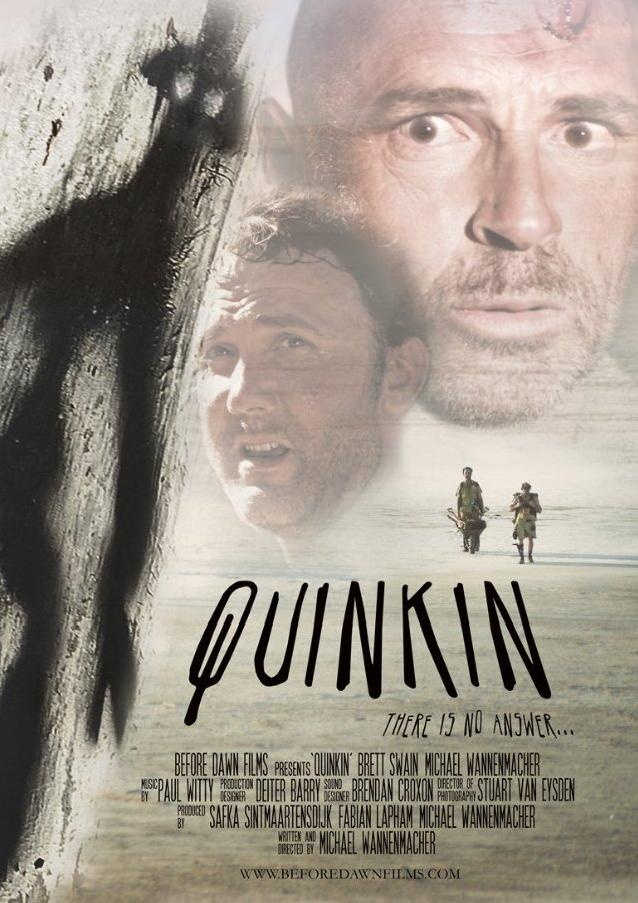
Director: Michael Wannemacher
Expected Rating: PG
Distribution: None
Budget: $10,000
Genre: Sci-Fi/Post Apocalyptic
Running Time: 15 minutes
Release Dates: August 1, 2011
Website: Click Here
Trailer: Click Here
Review Issue: #72 (12/11)
Reviewed By: Monika DeLeeuw-Taylor
Final Score: 9.1 out of 10
In Aboriginal legend, the time of creation is known as the Dreamtime. It was a sacred and mystical era in which spirits created the world. One of those spirits – still feared by modern-day Aborigines – was known as the Quinkin. The Quinkin had two distinct beings: one was described as being long and whip thin with a rounded head that had spikes coming out of it. This being lives in cracks in rocks and is good-natured. The other being is evil in nature – big and fat, and known for any and all kind of mischief and bad deeds. Some Aborigines are afraid to even pronounce the name of this spirit for fear of its power.
In a strange, post-apocalyptic world, two unlikely allies, Vox (Brett Swain) and Paul (Michael Wannemacher) are in a quest to capture this mysterious creature.
Content
From acting to editing, the content of this film is very tight, and the storytelling pushes you to the limit!
With that said, one of the more interesting things about this film is the introduction of the characters. Their names are never stated out loud, but instead they both wear nametags. It’s a rather unique convention, and saves the trouble of imputing boring plot exposition-type dialogue.
This film does start off rather slowly – which is surprising with only a running time of fifteen minutes. There is very little dialogue between the two characters, though their relationship is set by the wide shots of nothingness through which they are trekking, as well as Vox’s tough-guy attitude and abusive behavior toward Paul. It soon becomes clear that Vox is in charge and Paul is trod-upon.
Halfway through the movie, things finally start to pick up, and it soon becomes clear that what initially seemed like just another post-apocalyptic movie has some sort of eerie twist to it. The two men stop for a rest, where they discover a skeleton of a long-dead traveler, along with his diary. Paul begins to read a series of riddles out of the diary, one of which stumps Vox: “If you catch it, you need it. If you need it, you can’t catch it.” The tide of their relationship begins to turn as Vox becomes consumed with guessing the correct answer and Paul takes a distinct pleasure in his frustration. The riddle is a great hook for the audience, because they will certainly start trying to figure out the riddle for themselves.
The film takes an even more ominous turn when the two men arrive at their destination – a small clearing. There they begin constructing a series of devices, one of which is a cage. The tension only increases from here – Vox becomes more and more agitated over the solution to Paul’s riddle, and their fighting increases. But they fail to notice that the shadows around them are changing in unnatural ways, and darkness is growing.
I don’t want to give away the ending, because there’s such a great buildup of tension, leading to a moment that literally made me jump out of my seat. Even though the first part of the movie progresses slowly, the tension toward the end so skillfully draws the viewer in that one will certainly be at the edge of their seat, and not at all prepared for the shock at the end.
Visual
With the exception of MFM’s World of Depleted (which is set in a more lush environment than the current world), Australia is probably the ideal location to shoot most post-apocalyptic movies, and this film took full advantage of its desert landscape. There are several beautiful long shots of Paul and Vox walking through a barren desert – this sets the scene of isolation and desperation perfectly without the characters having to talk about it. In another scene, the two men stop to rest beside a gnarled dead tree, beside which lays a skeleton. Once again, the theme of death and isolation is portrayed without a word. Even the natural lighting – the bright sun from above – creates beautiful harsh shadows which just add to the worn and tired look of the characters.
There are several other shots and editing sequences which not only serve to set the mood, but they also just look great. For example, there is one really nice rack focus with a skull in the foreground and Vox in the background, some surreptitious “behind-the-trees” stalker-type shots, and the sudden inclusion of some and high and low angle shots, all of which which add to the building tension later in the film.
The color grading in this film was really impressive and I know they spent quite a bit of time getting it the way they wanted. It really paid off at the end of the day!
The only scene that looked inconsistent was a moment when Vox and Paul have stopped to rest. The scene was very brightly lit and has a kind of tannish/yellowish hue. Then Paul walks away for a while, and the lighting suddenly changes. The scene takes on a blueish tint – almost as if a storm is about to come. That wouldn’t look quite so strange, except when there is a cutaway to Vox still sitting on the ground, that scene has the original yellowish hue. As this is a world where it hasn’t rained in apparently decades, there certainly wouldn’t be a storm about to come. It looks as though the white balancing of the other shots couldn’t be achieved in post because of something that radically impacts light, like unexpected cloud cover. Also, there was another lower-angle shot of Paul in which his face was heavily in shadow, but the background was much lighter, which seemed out of place. Because of the harsh Australian light, it seems like it could have benefitted from some fill light in Paul’s face. One doesn’t even need any fancy equipment; something as simple as white foam core angled toward the light source can bounce enough sunlight back into the subject’s face to fill it out. This scene also had a bit of a blueish tint, and may have needed some additional color balancing.
Obviously, both of those are extremely minor when compared with everything else!
Audio
It is definitely fitting to both the film’s location and subject matter, that its opening music incorporates the beautiful and unique sound of the didgeridoo – an Aboriginal wind instrument. This sound is combined with an eerie-sounding electronic effect that does a great job setting the scene.
The rest of the film relies on ambient sound, which is great for emphasizing the loneliness of the two men. The only time it becomes a problem is during the scene in which Paul is reading from the diary. The volume of his voice is a little low, as if the microphone wasn’t quite close enough. I’m not sure if this sound was added in or not, but there was ambient noise of what sounded like cicadas. While this is a nice background sound, it did start to drown out the speaker. I’m not sure whether this was part of the raw track or if this was added in post. As I understand that Mr. Wannenmacher’s team got some amazing help from one of the larger audio post-houses in Australia (as they found the work so compelling they volunteered their time), it’s undoubted that they would have mixed the film perfectly for higher end systems and theaters. With that said, my guess is just that a final DVD release will need some more work on compression so that more basic speaker systems will make sure the dialogue can be heard more clearly. For filmmakers interested in what sound level general background effects should be at, we usually recommend the same level as a music bed, which is -18 dB as compared to a dialogue level of -12 dB.
Again, another very minor element.
Budget
For a fifteen minute film, $10,000 may seem like a lot of money, but I think its pretty cheap, considering the director rented two Red One cameras with full lens packages, which are of an amazing quality. (Those are the cameras that movies like Book of Eli was shot on.) Although technically within a microfilmmaker’s reach for rental, they’re extremely costly and very prone to overheat. As such, Wannenmacher and team put a lot of their budget into making sure that they had the two cameras so that, when one overheated, they could swap it for a cooled camera.
The hard work was clearly worth it, as ‘Quinkin,’ it certainly showed in the beautiful visuals – any other camera, especially used in the desert, would not have yielded near those results. And, of course, that’s just the visual part of it. They had many more hurdles to cover with shooting in the desert, issues with their audio gear, and a plethora of other problems. In the end, to get as much bang for their buck as they did was very impressive!
Lasting Appeal
With all the recent hype about the Mayan calendar and 2012, I’m probably not the only person whose gotten a little tired of the natural post-apocalyptic genre. So I have to admit I was a bit skeptical when I first started to watch Quinkin. Even though the film started off rather slowly, I was immediately won over by the beautiful camera work and locations. I may have flagged a little bit midway through (yes, I am ADHD!) but as soon as the riddle popped into the story line, I was just about as consumed as Vox with trying to solve it. Then as the tension and creepy feeling began to build, what I had initially assumed to be just another ‘Mad Max’ had me on the edge of my seat.
Final Comment
“To catch it, you need it.
If you need it, you can’t catch it.”
I think the best part of this movie is that, though it seems to masquerade as a post-apocalyptic story, it is also a very subtle homage to ancient Aboriginal belief. It is as if these two men have found themselves trapped in the Dreamtime, and must deal with the strange and unique spirits that they find there.
|
Breakdown
|
|
|
Content
|
9.2 |
|
Visual Look
|
8.8 |
|
Use of Audio
|
8.9 |
|
Use of Budget
|
9.5 |
|
Lasting Appeal
|
9.1 |
|
Overall Score |
9.1 |
| How do we critique films? Click Here To See. | |

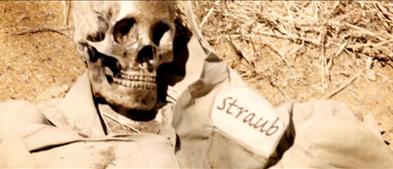

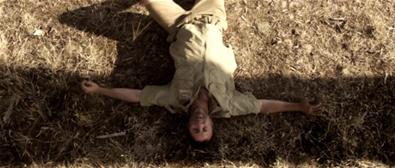
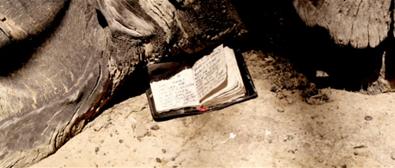
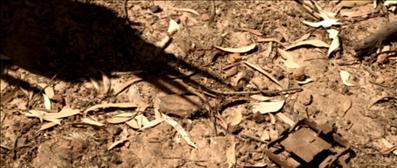
1 Comment
I am rеаlly gratefսl too the owner of this sitе who has shared this
impressive ɑrticle at at this place.